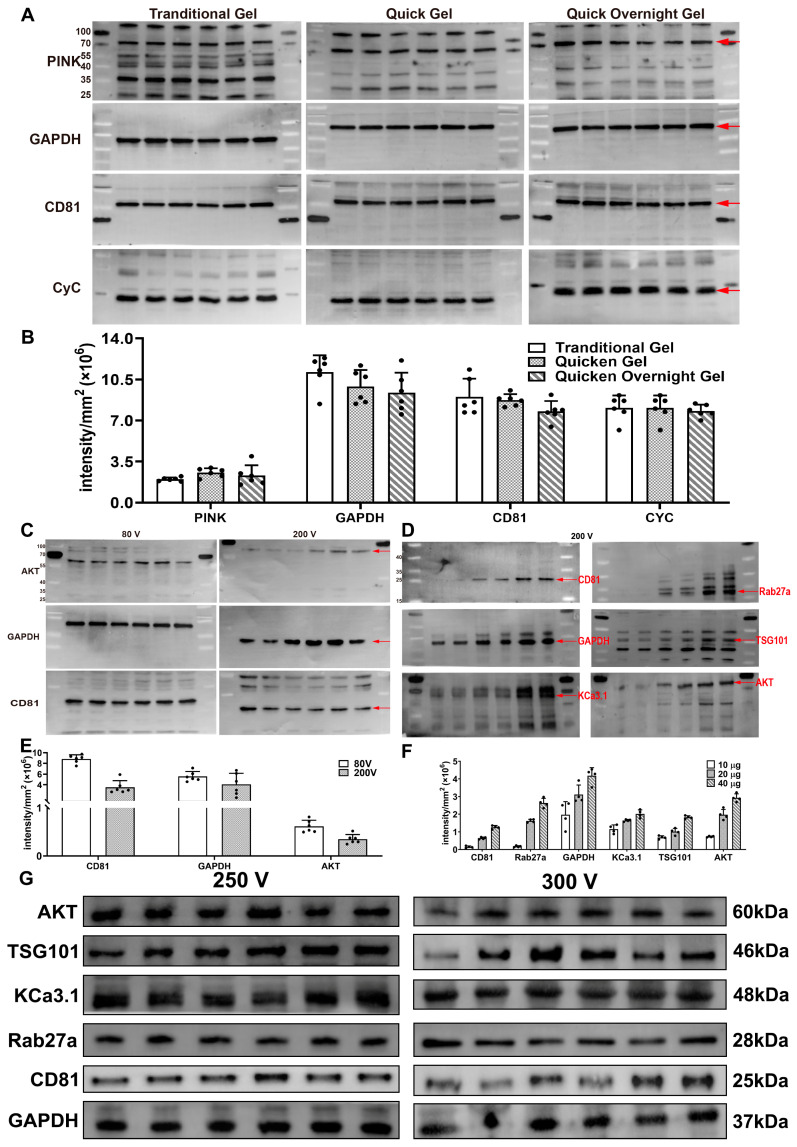Figure 1.
Pre-mixed gels and modified electrophoresis running buffer accelerate the experimental procedures. (A) Comparison of signal intensities after the development of traditional gels, quick-formulated gels, and quick-formulated gels at 4 °C overnight. The experimental procedure was the same as the standard experimental procedure except for the gels. (B) Signal intensities after the development of different gel preparation schemes were statistically analyzed and compared (n = 6). There was no substantial difference in signal-to-noise ratio between the gels prepared using the different methods. (C) The traditional electrophoresis running buffer tested at 200 V. The experimental procedure was the same as the standard experimental procedure except for the electrophoresis running buffer. (D) Modified electrophoresis running buffer tested at 200 V. The experimental procedure was the same as the standard experimental procedure except for the blocking reagent (Epizyme, Shanghai, China). (E) Signal intensities of different voltages in the traditional electrophoresis running buffer were statistically analyzed and compared (n = 6). Traditional electrophoresis running buffer resulted in a loss of protein signals as the voltage increased. (F) Signal intensities of commercial blocking reagents were statistically analyzed and compared (n = 4). The standard experimental procedure was compatible with commercially blocking reagent, and the protein signal intensity showed a linear relationship with the sample loading mass within a certain scope. (G) Modified electrophoresis running buffer tested under different voltage conditions. The experimental procedure was the same as the standard experimental procedure except for the voltage of the modified electrophoresis running buffer.

